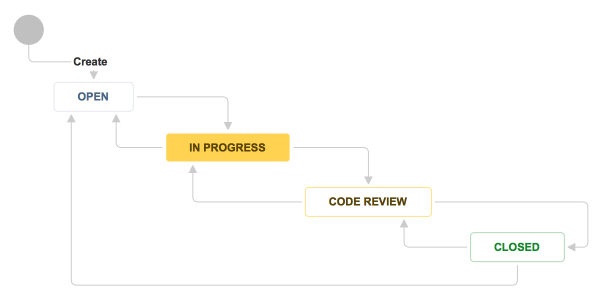Task management with Confluence and JIRA Software
I’d like to take a few moments to share how task management in Confluence relates to JIRA Software. Both products enable teams to collaborate using task management and distribution. Confluence works well for smaller business teams, whereas JIRA Software excels for larger projects and software teams.
Getting from here to goal
People rally around goals. For goals to be actionable, we need to break them down into a set of tasks that bridge the gap from where we are to where we want to be. Both the size of the team and the goal have a significant impact on how we approach organizing our plan. Let’s take a look at two different approaches for task management:
JIRA Software and Confluence: which one is for me?
Use Confluence tasks when:
- you want to track tasks alongside your work, such as meeting action items, event to-dos, and small team projects
- your project doesn’t require you to manage attributes, like scope, milestones, and releases
- reporting is not a key requirement
Use JIRA Software when:
- you need powerful insight into task and project management, such as workflows, custom attributes, task history, and reporting
- a task has multiple assignees
- you manage several streams of work concurrently
- your projects require collaboration between teams or many people
When to use both
JIRA Software and Confluence are two products that work even better together. Teams can use the strengths of Confluence for knowledge management, and the strengths of JIRA Software for work management. Work can be defined in Confluence and easily imported into JIRA Software for execution and delivery. For example, many teams will do kickoff planning in Confluence. Teams can organize around roadmaps and drill into requirements all within one conversation using shared Confluence pages. It’s easy to migrate requirements over to JIRA Software for execution and delivery. Each requirement can be broken down into tasks and flexibly assigned across the team for delivery. Managers can get a detailed, real-time status of projects with the powerful search and reporting features in JIRA Software.
Collecting adhoc team action items
At Atlassian, we’re focused on helping all teams collaborate more efficiently. When goals become shared, the team must collaborate to move forward. Effective collaboration amongst people requires sharing of knowledge, work, and assets. As teams learn more about their goals and plans, that knowledge needs to be shared across the team. As teams work together, they create assets that will need to be shared. For example, a marketing team will have customer research, go to market plans, and have common logos to share. Confluence helps teams work together by working as a common platform to share all of these resources.
These teams benefit from having task management close to knowledge management. During meetings, the meeting organizer can simply create tasks inline using the keyboard shortcut "[ ]". These tasks live close to the content. For example, meeting action items live in the same document as the agenda for the meeting. Additionally, a team offsite page has the plan (date, venue, attendee list, etc.) and action items all in one place. Let’s take a look at an example:

The tasks live right alongside your meeting agenda.
Confluence enriches the core task management set by allowing users to see the tasks they have across the instance as either the creator or the assignee. You can now see the status of tasks you have, as well as those you’ve assigned to other people on the team. Users can now tag tasks with due dates to help keep everyone on the team aware of key team deliverables.
Scaling task management in large projects
As goals and teams get larger, scale dictates a new approach. Larger goals with more people require flexible planning and visibility throughout execution. JIRA Software’s deep support for distributed task management becomes the platform of choice.
Track progress during execution: workflow
JIRA Software provides deep visibility into the workflow of individual tasks. Let’s look at a workflow used by many software teams.
The team can easily see the status of each task in the workflow. Workflows make it easy to see the flow of work in the organization, as well as what work remains. Confluence tasks only support a binary workflow: open or closed. JIRA Software allows much more insight throughout a task’s life cycle.
Classify different kinds of work
Projects often have multiple types of work. JIRA Software allows flexible issue configuration to closely mirror a team’s process. For example, software teams likely have user stories, blogs, feature requests, and more. JIRA Software allows you to closely model and track the different types of work your organization accomplishes.
Add custom attributes
JIRA Software has deep support for custom fields beyond what’s included inside of Confluence tasks: assignee, reporter, subject, completed, and due date. JIRA Software, by default, includes several key fields, like priority, to help teams more efficiently order work for effective delivery. Teams can also add additional custom fields that support their business process.

Easily scale as your project grows
JIRA Software is used by thousands of teams to track work across many different types of organizations. Some customers have hundreds of thousands of issues in their JIRA Software instances supporting tens of thousands of users. Whatever the challenge, JIRA Software scales to the solution.
Hungry for more?
Watch the blogs in this space to get notified when new tips articles like this are posted. And if that's still not enough, sign up for JIRA Insiders – our monthly newsletter covering all things JIRA.
![]() Written by Dan Radigan, Technical Account Manager
Written by Dan Radigan, Technical Account Manager

